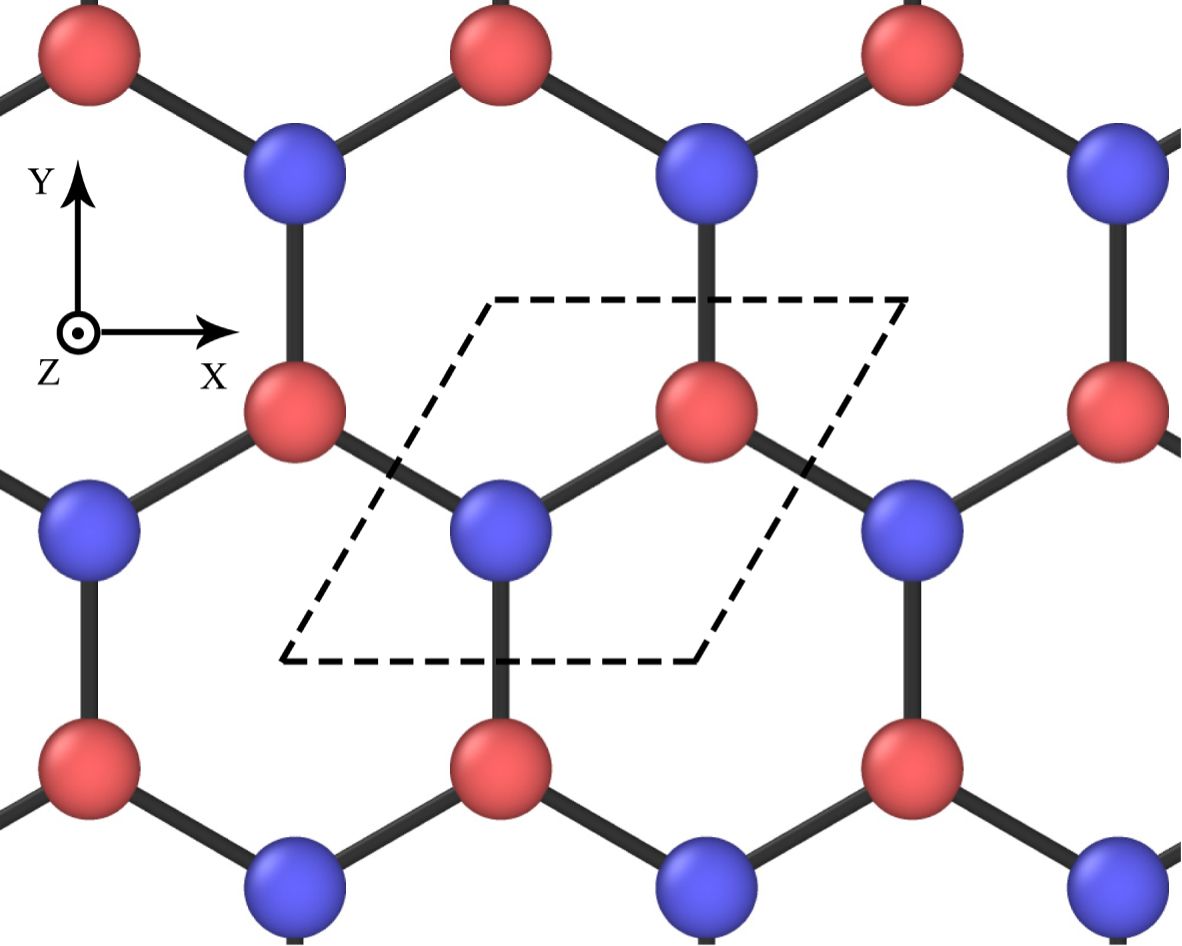EPJ B Highlight - The secrets of vibration-enhanced conductivity in graphene
- Details
- Published on 07 March 2017

Physicists define a smart way of inducing large-amplitude vibrations in graphene models, which could open the door for novel electronic applications
Graphene, the one-atom-thick material made of carbon atoms, still holds some unexplained qualities, which are important in connection with electronic applications where high-conductivity matters, ranging from smart materials that collectively respond to external stimuli in a coherent, tunable fashion, to light-induced, all-optical networks. Materials like graphene can exhibit a particular type of large-amplitude, stable vibrational modes that are localised, referred to as Discrete Breathers (DBs). The secret to enhancing conductivity by creating DBs lies in creating the external constraints to make atoms within the material oscillate perpendicular to the direction of the graphene sheet. Simulations-based models describing what happens at the atomic level are not straightforward, making it necessary to determine the initial conditions leading to the emergence of DBs. In a new paper published in EPJ B, Elham Barani from the Ferdowsi University of Mashhad, Iran, and colleagues from Russia, Iran and Singapore use a systematic approach to identify the initial conditions that lend themselves to exciting DBs in graphene, ultimately opening the door to understanding the keys to greater conductivity.
The authors first used simulations to understand the dependency of the amplitude of the DB vibrations on the frequency of oscillations. Barani and colleagues then established the dynamic equations describing the vibrating motion of the atoms in graphene and the influence of external energy potentials. They discovered that there is exactly one solution to the equation corresponding to the emergence of DB excitations, which is dictated by the regular symmetry of graphene.
The most surprising finding of this study is that the solution describing the conditions for triggering DBs is not affected by the amplitude of the vibrational mode. Nor does the type of interatomic energy potentials used in the simulations to model the external constraints on the atomic lattice alter how to best induce DBs. These findings offer a valuable theoretical basis for future experimental work.
E. Barani, I. P. Lobzenko, E. A. Korznikova, E. G. Soboleva, S. V. Dmitriev, K Zhou, and A. M. Marjaneh (2017), Transverse discrete breathers in unstrained graphene, Eur. Phys. J. B 90:38, DOI: 10.1140/epjb/e2017-70751-2




